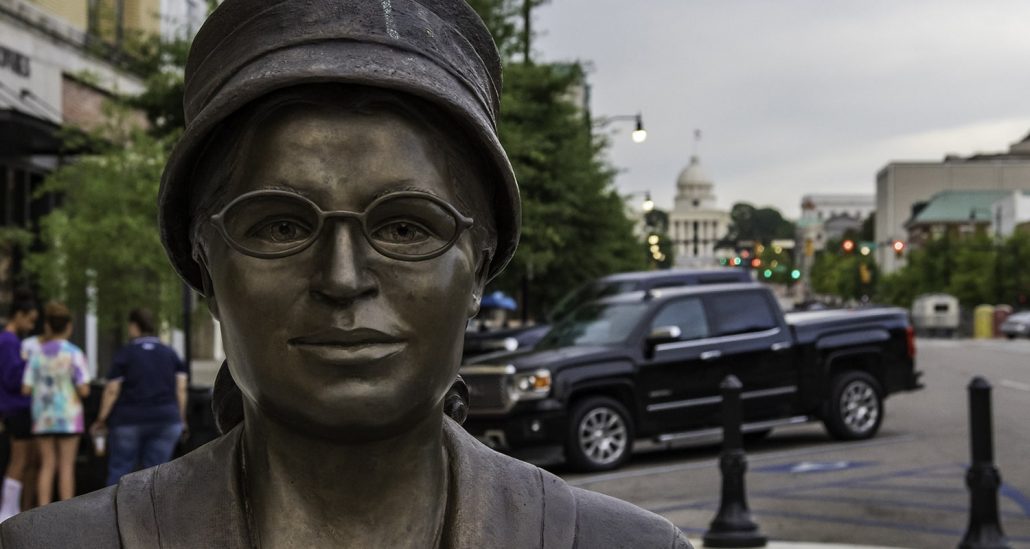Did You Know?
Standing Up for Justice: What Rosa Parks Can Teach Us
On December 1, 1955, Rosa Parks taught the world a valuable lesson: we can fight for our beliefs by not tolerating everyday acts of injustice and oppression. Our awareness of these injustices and our willingness to act against them may be present in our own private thoughts, in words shared with others, or through actions of visible defiance and civil disobedience.
On this anniversary, as we begin to learn more about the example Rosa Parks set more than fifty years ago, we must ensure we do two important things.
First, we must learn about Mrs. Parks’ full life so that we can understand her motivations, frustrations, and the meaning behind her actions. Without context, we cannot fully grasp her intentions and the power her actions had in supporting the Civil Rights Movement. The resources and quote provided below are good places to start building your knowledge about Mrs. Parks’ story.
“People always say that I didn’t give up my seat because I was tired, but that isn’t true. I was not tired physically, or no more tired than I usually was at the end of a working day. I was not old, although some people have an image of me as being old then. I was forty-two. No, the only tired I was, was tired of giving in.”
- Read a brief synopsis of Rosa Parks’ life story on the Rosa and Raymond Parks Institute for Self-Development website.
- Browse the more than 7,500 items and 2,500 photographs available from the Library of Congress Rosa Parks Papers collection that aims to tell her life story.
- View the photo at the National Portrait Gallery of Parks being fingerprinted after she was arrested for a second time during the Montgomery Bus Boycotts.
- Watch Prof. David Ikard’s TED talk, “The Real Story of Rosa Parks.”
- Read Rosa Parks’ biography, Rosa Parks: My Story.
Second, we must learn about other activists from the Montgomery Bus Boycott and the Civil Rights Movement that helped initiate, support, and further Civil Rights action throughout the United States. Think about the grassroots movements that were developed in response to inequity and injustice—beyond all the Civil Rights figures you learned about in school or through your own research, there are countless additional leaders and activists that remain less well-known. We must give our students, and ourselves, the full story in order to connect the past to the present.
Take some time to read “Beyond the Bus” from Teaching Tolerance and download the PDF for educator suggestions. This rich document provides several useful sections to support your background knowledge and historical context. The “Unseen Story Beyond the Bus,” “Essential Areas for Civil Rights Education,” and the “Five Essential Practices for Teaching the Civil Rights Movement” are particularly useful for lesson planning and structuring thoughtful classroom discussion. In addition, spend time learning about the Civil Rights Memorial, located in Montgomery, Alabama.
Today, take a few moments to think about Rosa Parks and her actions, not just on December 1, 1955, but throughout her entire life. Consider your own actions and how you can continue Mrs. Parks’ defiant display of quiet strength.
Related Articles

The 2024 WorldStrides Student Photo & Video Contest Gallery
On December 1, 1955, Rosa Parks taught the world a valuable lesson: we can fight for our beliefs by not tolerating everyday acts of injustice and oppression. Our awareness of these injustices and our ...

Girl Scouts: Costa Rica Tour
On December 1, 1955, Rosa Parks taught the world a valuable lesson: we can fight for our beliefs by not tolerating everyday acts of injustice and oppression. Our awareness of these injustices and our ...

2024 Mérida Pride Parade
On December 1, 1955, Rosa Parks taught the world a valuable lesson: we can fight for our beliefs by not tolerating everyday acts of injustice and oppression. Our awareness of these injustices and our ...

Rise Up, Take Action: How to Support the LGBTQIA+ Community
On December 1, 1955, Rosa Parks taught the world a valuable lesson: we can fight for our beliefs by not tolerating everyday acts of injustice and oppression. Our awareness of these injustices and our ...


